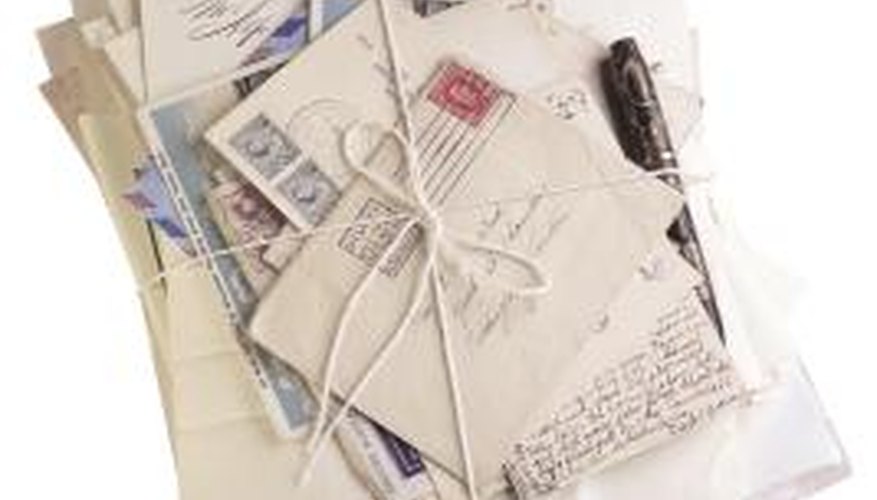In 2009 alone, the United States Postal Service processed an average of 405,000 mail pieces each minute and handled 40 per cent of the world's cards and letters. Workers check each piece of mail either by hand or by machine to determine whether the sender attached the correct postage. With postal rates frequently changing and so many stamps having similar looks, it's easy to put the wrong postage on a letter. What happens to mail when there's not enough postage?
Letters Sent Without Enough Postage
For letters sent without enough postage, the post office might catch the error either on the sending or the receiving end. In either case, they will mark the front of the letter with the amount that is owed and then ask the person to whom it is addressed to pay the amount of the deficiency. For business mail, if a batch of 10 or more letters arrives without sufficient postage, the post office will notify the sender so that the error can be corrected before mailing.
When the Recipient Refuses to Pay the Postage Deficiency
After the post office marks a letter with the amount of postage owed, the addressee has the opportunity to decide whether to pay the amount owed or to refuse the letter. If the addressee does not pay the deficiency and the letter has a return address, the post office will return the letter to the sender. The sender then can affix additional postage and place the letter back in the mail. Without a return address, the post office will treat the letter as dead mail if the addressee refuses to pay the postage shortage.
- After the post office marks a letter with the amount of postage owed, the addressee has the opportunity to decide whether to pay the amount owed or to refuse the letter.
- If the addressee does not pay the deficiency and the letter has a return address, the post office will return the letter to the sender.
Letters Sent with No Postage
If a letter is mailed with no postage at all, the post office will not attempt to collect the deficiency from the addressee. It will simply return the mail to the sender if there is a return address, or treat the letter as dead mail if there is no return address. It will also treat the letter as dead mail if the return address is the same as the recipient's address.
Fraudulent Use of a Return Address
Many people believe that making the addresses match for the recipient and the return address will result in a letter being delivered for free, but this is not the case. If a letter has the same address listed both for the addressee and the return address, the post office will treat the letter as dead mail. Although letters addressed this way sometimes are delivered, a person addressing mail this way is actually committing mail fraud and could be prosecuted.
